Conservation organization The Nature Conservancy takes a considered step into aquaculture
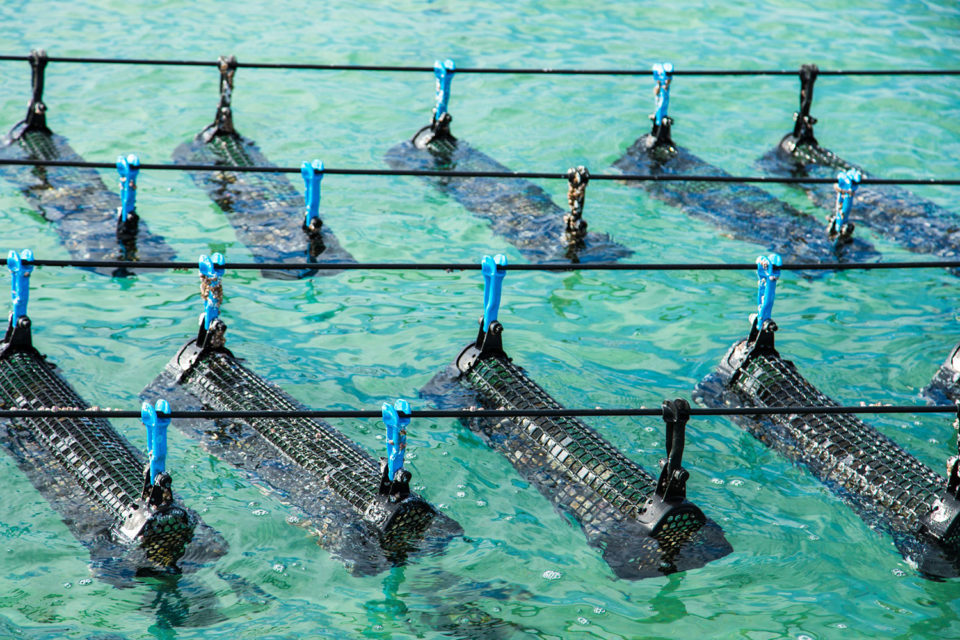
In an Aquaculture by Design video produced by The Nature Conservancy (TNC), fishermen in Belize explain why they turned to seaweed farming after their fish catches dwindled.
To their surprise, they found the new seaweed farms seemed to be helping the fish and spiny lobsters in the area, further supporting the notion that aquaculture’s impact on the environment can indeed be not only low-impact, but – yes – restorative. Of the many ecosystem services aquaculture has to offer, seaweed farming is finally being celebrated for its role in absorbing carbon and nitrogen from the water.
But sustainable seaweed aquaculture is hardly the only example of how aquaculture can earn “wins” on several fronts – jobs, healthful proteins and healthy ecosystems.
Those involved in aquaculture for more than a decade likely recall how environmental groups publicly called out parts of the industry particularly in its early days for ecological damage and urged consumers to boycott farmed fish. They may be quite surprised to see TNC, an environmental non-governmental organization, producing a series of videos about aquaculture’s positive, restorative effects on ecosystems.
That fierce e-NGO opposition led to a simplistic, negative public perception of all fish farming – even as respected marine scientists wrote and spoke that aquaculture’s effect on the environment could be low-impact and restorative.
In the last few years, TNC has not only entered the aquaculture conversation, it’s turning it around by strategically exploring and promoting aquaculture’s potential to provide ecosystem services.
“This is kind of a paradigm shift in how we’re trying to understand aquaculture, at least in the conservation world,” said Robert Jones, global lead for aquaculture at TNC. “We’re trying to turn this on its head.”
In Chesapeake Bay, TNC partnered with oyster farms to study their effect on water quality. They found the farms are filtering 1 percent of the water coming through the farm and that there are no detectable negative impacts on benthic habitat and water quality.
In Belize, the fishermen-turned farmers are earning $15 a pound for their seaweed (dried) and have observed a resurgence of marine life around the farms, according to TNC’s video.
TNC is carefully monitoring to ensure there is little to no impact on the area and that the farms are benefitting communities, and is working to demonstrate how to have a successful, productive aquaculture system within a marine protected area (MPA).
“Our hypothesis so far has been correct that there have been ecological benefits of the farms in Belize,” said Jones.
A considered step into aquaculture
TNC was not particularly active in aquaculture until a few years ago, when a new leader of its oceans program recognized the growing importance of aquaculture and brought Jones on board.
“As a conservation organization,” said Jones, “TNC’s overall objective in aquaculture is to help the sector meet the growing need for seafood in a way that doesn’t degrade the environment.”
But it’s more than that. TNC also heard from fish and shellfish farmers in many places about their observations of a resurgence in fish and seagrass, improvements in water quality and more.
“We were aware of some of the literature already that substantiates that,” said Jones. “But hearing from the farmers was important to that as well.”
So TNC is funding studies with a global perspective as well as those with a more regional or localized focus to determine the benefits of aquaculture operations.
“We realized very quickly that wow, somebody should publish this,” said Jones. “It’s known in some spheres but there’s not really been a mainstream narrative produced yet.”
The first of the organization’s three planned aquaculture research papers came out earlier this year. The Ecosystem Services of Marine Aquaculture: Valuing Benefits to People and Nature, published in BioScience, examined the published work documenting the potential ecosystem services and ecological benefits of many types of aquaculture.
The second is a more formal literature review and has been accepted by Reviews in Aquaculture. The third, expected in about three months, studies the places in the world where aquaculture can provide the most ecological benefits.
It’s a tremendous win-win, not only for people who have spent their whole career in aquaculture but also for the environmental organization that has to their tremendous credit become a learning community and become open to change.
The initial work is a collaboration of scientists affiliated with the TNC, and Heidi Alleway, a scientist at the University of Adelaide in South Australia, and Melanie Bishop, at Macquarie University in Sydney, Australia. Alleway, the paper’s lead author, thought a lot about the default public perception that aquaculture is inherently negative, while working recently as the former general manager for aquaculture for the state government in South Australia.
“There was very little understanding and appreciation for the full range of ways in which aquaculture is interacting with the environment,” said Alleway, executive officer of research engagement at the University of Adelaide, in Adelaide, South Australia, and associate researcher with the university’s Environment Institute.
“It was more curiosity than frustration, that I used to have a similar perception that aquaculture was an activity that could have a high degree of negative impacts and needed to be tightly managed and tightly controlled and put into a really rigorous regulatory framework,” said Alleway.
In reality, she said, aquaculture comprises many different types of animal and plant-rearing activities, and represents potential positives for ecosystems.
“We wanted to highlight that potential application, so that a lot of people could think about that concept in their own setting, their own country and build the conversation around that application and positive impacts,” said Alleway.
Aquaculture should be viewed as an interconnected part of the local environment, she believes: “Our first interest was really to try and open up the dialogue about it,” she said. “It would be great to see hundreds more papers and examples and so forth come out in the next little while around this. That would be ideal. The more people talking about it, the better.”
Nutrient trading schemes involving shellfish aquaculture in Chesapeake Bay and off the coast of Cape Cod represent good examples of how policy and management can and should shift to reflect aquaculture’s positive benefits, said Alleway.
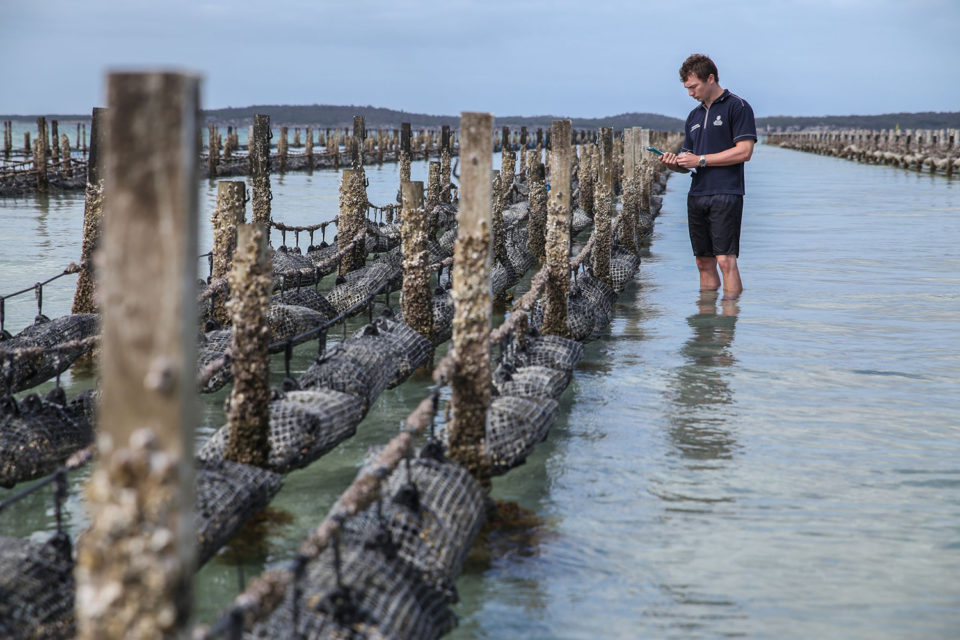
A learning community
Marine scientist and ecologist Dr. Barry Costa-Pierce at the University of New England (UNE) has long held the view that while problems like excess antibiotic use must be addressed, aquaculture holds tremendous potential for conservation and restoration efforts.
As a student in the 1980s, Costa-Pierce observed people planting nursery-grown mangroves to help restore wild mangrove areas off the coast of Florida. The similarity between that and Arbor Day – when people plant nursery-grown saplings to restore public forests and parks – struck him.
He thought of it as “restoration aquaculture,” and it helped form his vision of the positive potential of aquaculture to help ecosystems. Costa-Pierce is executive director of UNE North, The Institute for North Atlantic Studies and a professor of marine sciences.
That was one of several “lightbulb moments” early in his 40-year career as a champion and pioneer of ecological aquaculture. Another was learning about restoration of wild eelgrass with nursery-grown eelgrass. Another was reading scientific papers about conservation work to raise corals to help replenish wild coral reefs.
Ecological aquaculture means using a wide range of aquaculture types, he said, methods and techniques as a “toolbox” to not only produce valuable, healthful protein for people but also to restore and benefit ecosystems – even in the same farming operation. It includes the best practices to make industrial aquaculture sustainable.
So you might say Costa-Pierce has enjoyed a few “hallelujah moments” lately.
UNE and TNC inked a memorandum of understanding to strategically work together to support ecological aquaculture.Costa-Pierce’s overall research interest is in “ocean food systems,” or how seafood systems throughout the world interact with marine/freshwater ecosystems, fisheries, aquaculture and people.
“It’s a tremendous win-win,” said Costa-Pierce, “not only for people who have spent their whole career in aquaculture but also for the environmental organization that has to their tremendous credit become a learning community and become open to change.”
Follow the Advocate on Twitter @GAA_Advocate
Now that you've reached the end of the article ...
… please consider supporting GSA’s mission to advance responsible seafood practices through education, advocacy and third-party assurances. The Advocate aims to document the evolution of responsible seafood practices and share the expansive knowledge of our vast network of contributors.
By becoming a Global Seafood Alliance member, you’re ensuring that all of the pre-competitive work we do through member benefits, resources and events can continue. Individual membership costs just $50 a year.
Not a GSA member? Join us.
Author
-

Lisa Duchene
Lisa Duchene has reported on the marine environment since 1993. She is a business-environment writer, essayist and communications consultant in central Pennsylvania. For a selection of her marine environmental work: http://www.lisaduchene.com/my-magazine-work/marine-environmental-work-lisa-duchene/
Related Posts
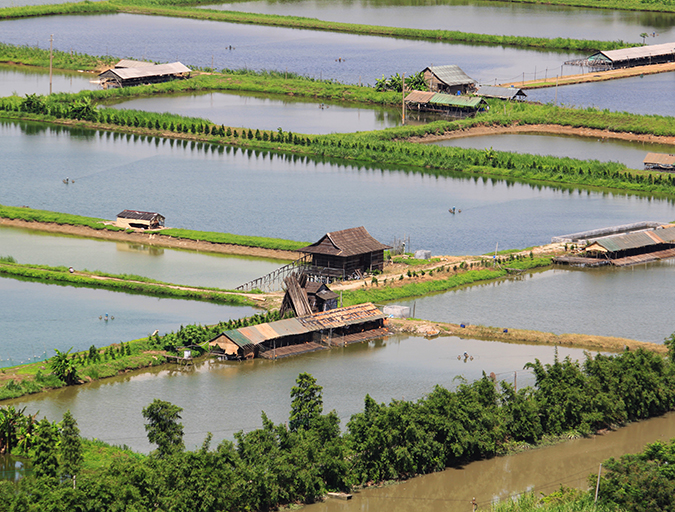
Responsibility
Aquaculture certification steers to zone management
Zone management is an emerging field of interest among industry stakeholders. Experts say it will aid in controlling diseases and in determining carrying capacities. We take a closer look at the management tool’s potential.
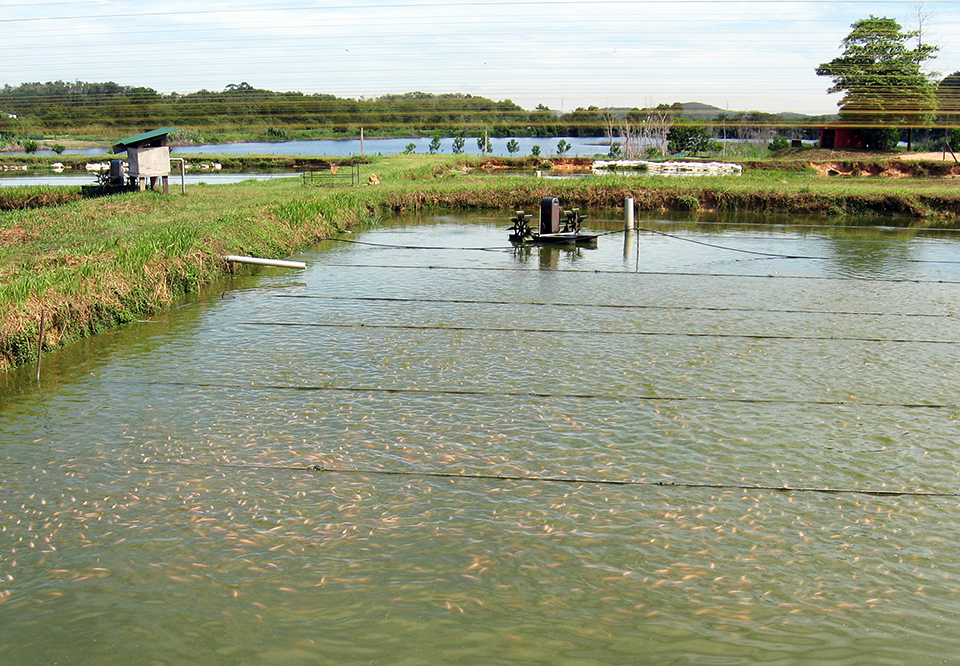
Responsibility
Assessing the carbon footprint of aquaculture
A carbon footprint is an estimate of the total carbon emissions resulting from the production, use and disposal of a product or service. Carbon footprints for aquaculture products result mainly from the use of manufactured feed and mechanical aeration.
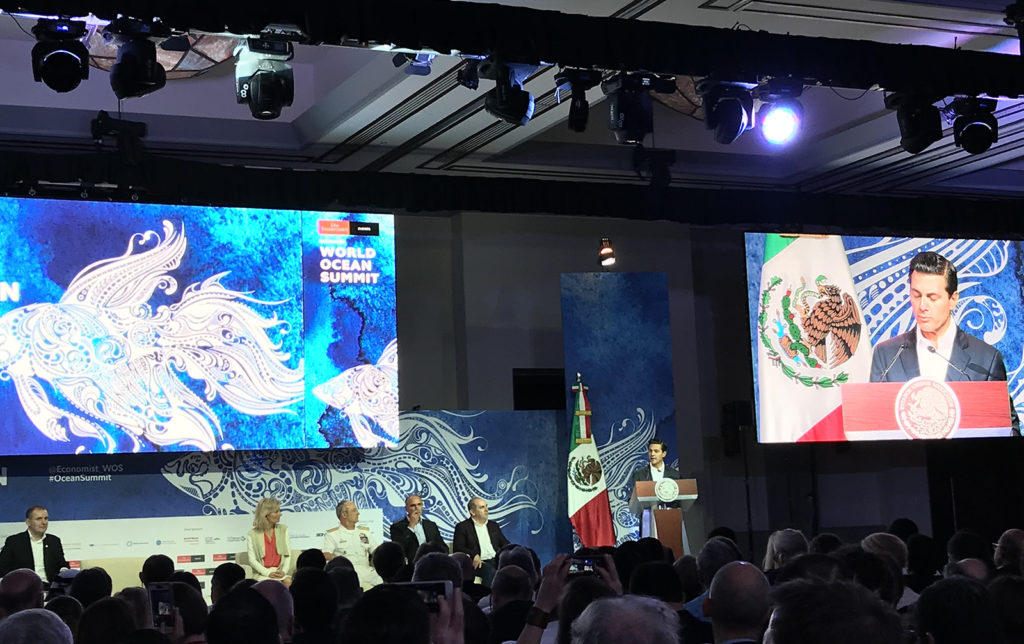
Responsibility
At World Ocean Summit, Mexico asks: What do we want our oceans to be?
While talk of preservation and conservation dominated the annual event, a blunt query reminded all that the oceans need protection and sustainable development.
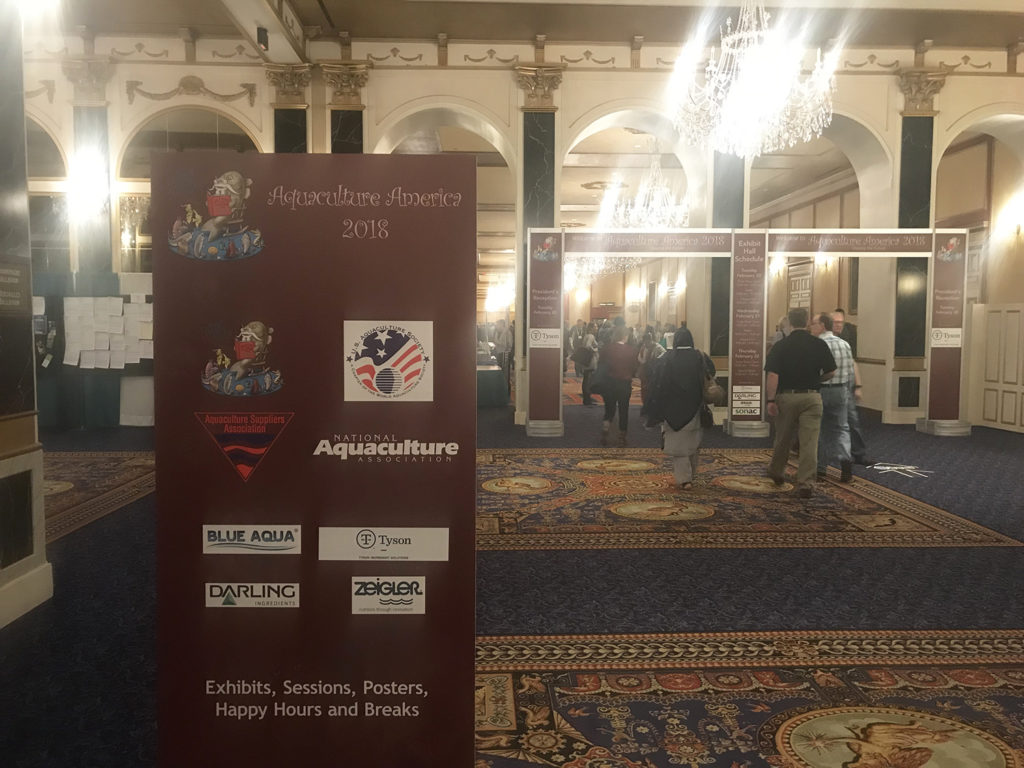
Innovation & Investment
At Aquaculture America 2018, signs of support for thriving domestic industry
Aquaculture must reshape its public narrative in order for the blue revolution to transpire. That’s what many prominent voices were saying at the World Aquaculture Society’s annual U.S. conference in Las Vegas.

